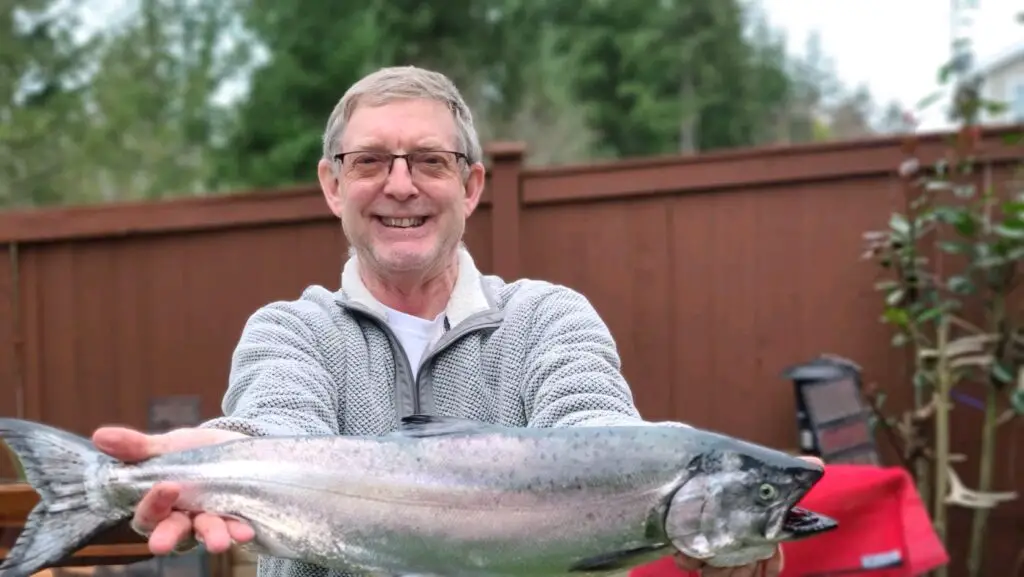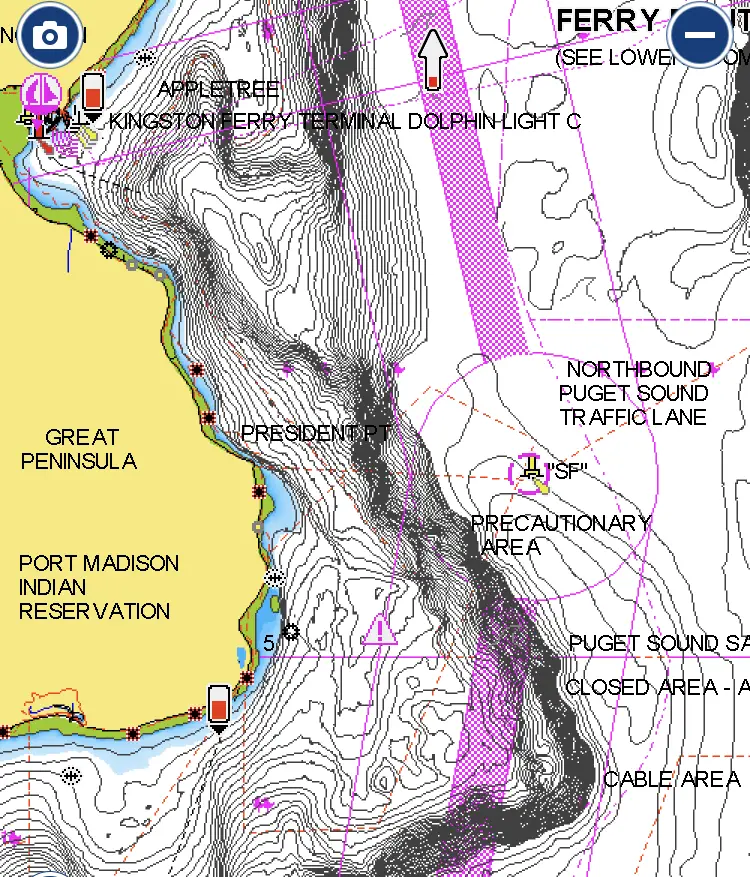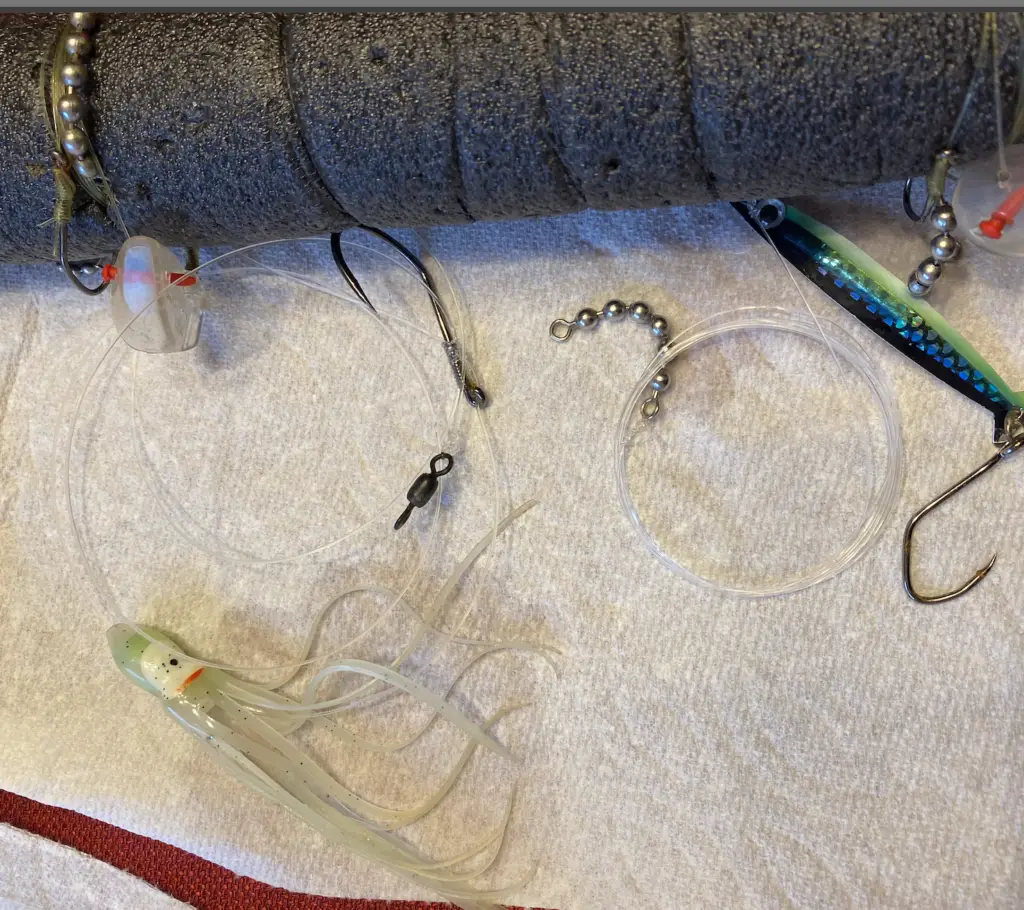
I was able to get out on the January 1st, 2021 Blackmouth opener on the Puget Sound. We braved the wind and modest opener participation to put a nice keeper in the boat. Here is my detailed fishing trip report.
Yes, there was a small craft advisory for the Puget Sound and Hood Canal, and yes I have a small ish boat (20′ Alumaweld Stryker with a jet).
You might ask what business I had being on the water in these conditions, but I’ve got a couple of super important bad weather safety rules I stick to that I can share below. I will also share what tackle we were using and what might have been the difference between our success and many others I’ve talked to who only pulled shorts. For reference, the current regulations require a keeper to be at least 22″, fork to nose.
Happy New Years!
I have no doubt that plenty of folks missed this opener either due to the wind forecast or simply partying too late on New Year’s Eve (you know who you are! Happy New Year, by the way! May 2021 bring back dining indoors and even better outdoor recreation opportunities than 2020 (although 2020 was pretty awesome for some fisheries).
Fishing in bad weather
Okay, so here are my two rules:
- Fish near sheltered water. If things go from bad to worse and you need to get the heck out of somewhere, that’s a whole lot easier if your “run” (assuming you can travel more than 7mph) is only about 5 minutes. Who really wants to be white-knuckling for an hour to get out of a situation they didn’t plan for?
- Make sure in your run back, that you are going with the wind. I’m all about fighting 1-3 ft wind waves to my fishing spot when I know I can ride those waves back home a short distance if things are worse or become worse than I anticipated.
Fishing trip report
We launched right around 7:30 am at first light from the Kingston ramp and fought some 10-15 mph wind coming from the SE to get to the bottom of our troll. There was a small tidal exchange, so we planned to fish both with the wind and against the wind. Both trolls produced fish, but man was it tough to troll into the wind while also managing one of the downriggers (no autopilot here folks).

We didn’t venture out to Jeff Head as that would have been really nuts in my boat. We stayed around Appletree Cove fishing the inside of that shelf that sits in about 80′ of water. The inside drops quickly from 80′ to 300′ and we fished it alternating from 90′ to about 115 ft. We hooked fish all the way from the north and south sides of the shelf/bar.
The first hookup we had about 10 minutes after dropping our gear down was a line tangling double. I’m almost positive one of those first fish we released was a keeper, but in my head I still was in summer mode regarding fish size and so we didn’t even measure it.
As I re-adjusted my visual size estimating expectations and started measuring fish, I realized that the first one was probably 22-23″! We had fairly non-stop action, but about 1.5 hours into the trip Ash felt a fish that was a bit nicer and it turned out to be his 24″ keeper. We stayed on the water for another hour or so and took off by 11:15 am as the wind started to pick up stronger.
Blackmouth fishing tackle
We fished with downriggers the entire time, though we did see some moochers and jiggers out there as well. We were running the typical 11″ flashers. You can see below what we were using.

Please refer to our Puget Sound blackmouth fishing how-to for more information on tackle to use and why. The Madi is new to my rotation, but the other two get used all year long. Here’s an amazon link for the blue crush.

We got fish consistently on the hoochie, green label herring in a helmet, and the coho killer spoon. The keeper (both!) came on the coho killer. One thing I would have done differently is to not run any bait.
Bait can be awesome for blackmouth fishing, but high wind and bait really don’t mix. And the funny thing, is I already knew that, but I think I was just too excited to downrigger fish for salmon again that I planned to do a bit too much with regards to tackle.
You cannot go wrong with just running a few reliable spoons in inclement weather.
Trolling speed matters for catching keepers
One thing I will say in regards to keeping away from the shakers and shorts when blackmouth fishing on the Puget Sound is that trolling speed really matters. We tried to keep our speed (even going against the wind) at about 3mph or higher. This is really hard to do traveling into the wind while manning a downrigger / fishing rod and dropping it down 100 ft, but very necessary.
The faster trolling speed will eliminate some of the smaller fish that cannot swim as fast to catch up to your gear. There are so many shakers and shorts that if you even have half a clue with regards to tackle / fishing spots, you will get a fish on within minutes of dropping your gear.
Time with a shaker and short on is time you could otherwise be presenting your offering to a keeper-sized fish.
Even going fast, we were still getting these smaller fish, but we were going faster than everyone else on the water, and we also didn’t talk to anyone else with a keeper fish that day (nor did we see any nets fly).
Wrapping it up
By the middle of next week (Jan 4th week if you are reading this later), the wind should moderate a bit, allowing more folks to join in on the fun. Hopefully, this article gave you a few ideas that might help you be successful. Good luck out there and stay safe.
As a reminder, keep tabs on our 2021 Puget Sound Salmon Seasons post that we will update throughout the year as the summer seasons get announced. Also, for a more complete background on Puget Sound Salmon Fishing, check out this linked page as well.
You can also follow me on Instagram @PacificNWbestlife or facebook.com/pnwbestlife